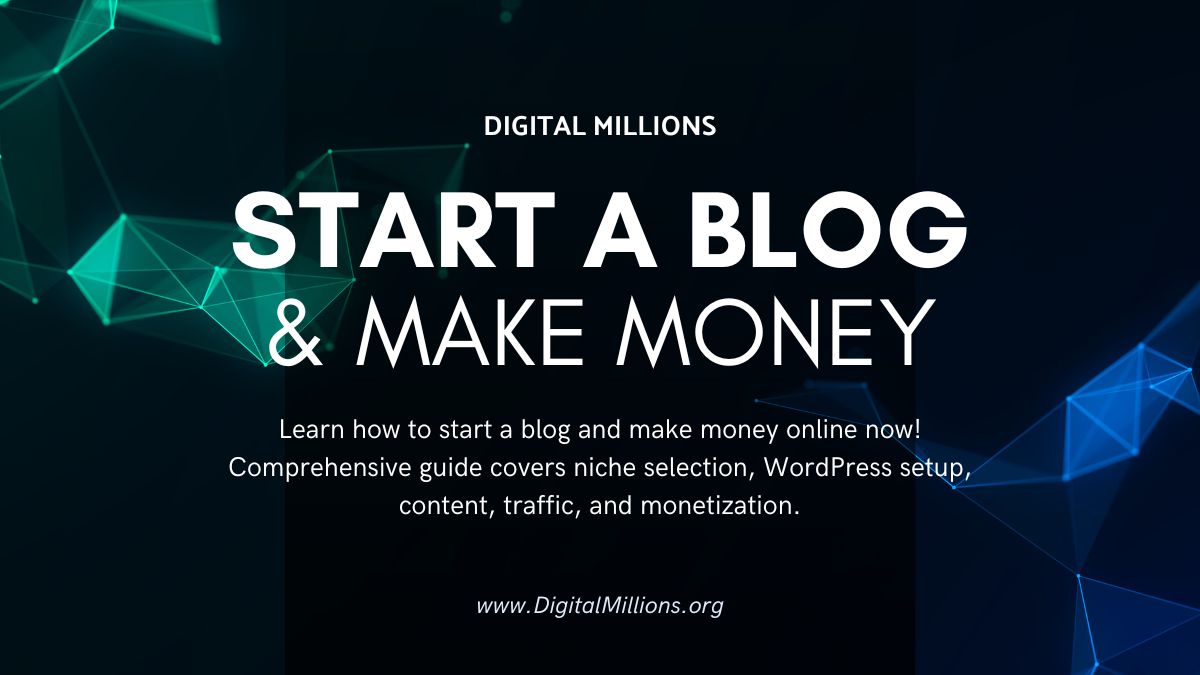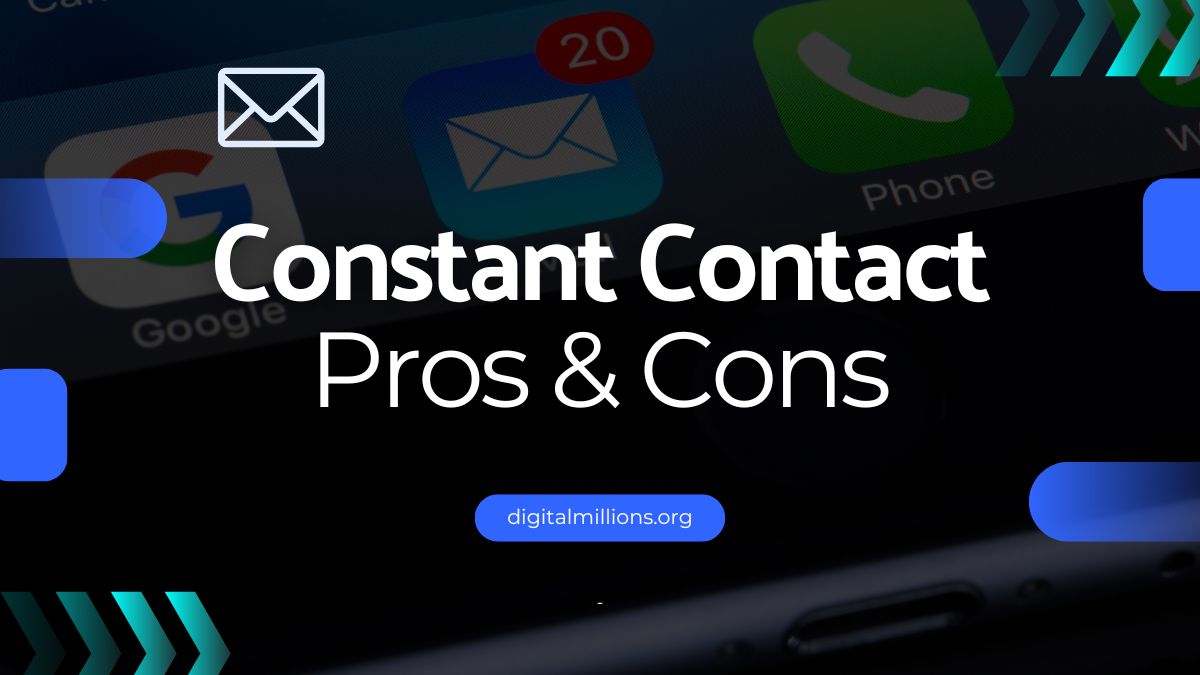Email marketing has been a key part of digital marketing for a long time. It’s a great way for businesses to reach out to their audience, grow relationships, and increase sales.
But, like everything online, email marketing is changing fast. As we look to the future, it’s important for marketers and business owners to stay ahead. The future of email marketing holds exciting chances for those ready to adapt and try new things.
In this easy-to-follow guide, we’ll cover 5 big trends shaping the future of email marketing. Even better, we’ll show you how to use these trends for your benefit.
Here’s what you can expect in this article:
- An overview of the current email marketing landscape
- 5 game-changing trends that will define the future of email marketing
- Practical tips on how to profit from each trend
- Tools and resources to help you implement these strategies
Let’s dive in and discover how you can stay ahead in email marketing.
What you’re about to read:
The Changing World of Email Marketing
Email marketing has changed a lot since it first started.
It began with simple text emails, but now we see emails with interactive and fun content that keeps evolving to match what people want.
Today, email marketing is still one of the best ways to reach people online.
It has a great return on investment (ROI).
In fact, some studies say you can make about $42 for every $1 you spend. That’s one reason why businesses continue to use email marketing in their strategies.
But things are changing. People expect more now.
They want emails that are personalized, relevant, and sent at the perfect time. Generic emails that try to speak to everyone just don’t cut it anymore.
Also, new technology is making email marketing even better. From using artificial intelligence to adding interactive features, these tools are changing what we can do with email.
Looking forward, it’s clear that businesses need to change their email strategies to keep up. Those who don’t adapt could fall behind in the busy online market.
Let’s dive into the 5 main trends shaping the future of email marketing.
Future Trends in Email Marketing
1. AI-Powered Personalization
Artificial Intelligence (AI) is changing email marketing by making it possible to personalize emails like never before.
In the past, personalization meant just adding the recipient’s name to the subject line. Now, the future of email is about creating custom content for each subscriber.
AI can look at a ton of data, like a subscriber’s past emails, shopping history, browsing habits, and even their age or location. This helps marketers send emails that match what each person likes and needs. Here’s how AI is making email personalization better:
- Content Suggestions: AI can recommend products, articles, or deals that each subscriber will like most.
- Best Send Time: AI can figure out the best time to send emails based on when each person usually opens them.
- Dynamic Content: Emails can change their content depending on the person’s location, preferences, or recent actions.
- Predictive Analytics: AI can predict which subscribers are more likely to make a purchase, helping marketers focus their efforts.
The advantages of AI-powered personalization are huge.
Personalized emails have been shown to create six times more sales than generic ones. They also boost open rates, clicks, and engagement.
To make the most of this trend, think about using email marketing tools with AI-powered features. These tools can help you send more relevant, interesting emails that connect with your audience and lead to better results.
| AI-Powered Personalization Benefits | Impact |
|---|---|
| Increased Transaction Rates | 6x |
| Improved Open Rates | +26% |
| Higher Click-Through Rates | +14% |
| Enhanced Customer Engagement | +74% |
2. Interactive and Dynamic Emails
The future of email marketing is becoming more interactive. Static, text-based emails are being replaced by dynamic, engaging ones that feel more like web pages. This shift is happening because of technologies like AMP (Accelerated Mobile Pages) for Email. With AMP, people can interact with the content directly inside the email.
Interactive features in emails can include:
- Carousels to show multiple products
- Accordion features for FAQs or product details
- Forms for submitting feedback or making reservations
- Quizzes or polls to engage subscribers
- Animated buttons and calls-to-action
These features make emails more interesting and also help reduce steps for the user.
Instead of having to click through to a website, subscribers can act directly within the email. This makes it easier for them and often leads to higher conversion rates.
Another fun part of this trend is gamification.
Adding game-like elements, such as scratch cards, spin-the-wheel offers, or progress bars for loyalty programs, makes emails more enjoyable for subscribers.
To take advantage of this trend, try using simple interactive elements in your emails. Many email marketing platforms have easy-to-use, drag-and-drop editors that let you add these features without needing coding skills. Once you’re comfortable, you can explore advanced options like AMP for Email.
Just keep in mind that interactive elements should have a clear purpose. Use them to make your message stronger and improve the user experience only.
| Interactive Email Element | Average Increase in Click-to-Open Rate |
|---|---|
| Image Carousel | +18% |
| Accordion Feature | +13% |
| Embedded Forms | +22% |
| Gamification Elements | +30% |
3. Privacy-First Approach
As concerns about data privacy grow, email marketing is shifting towards a privacy-first approach. This change is being driven by both what people want and new laws like the GDPR in Europe and the CCPA in the U.S.
A privacy-first email marketing strategy includes:
- Transparent data collection
- Clear and easy-to-find privacy policies
- Giving subscribers control over their data
- Strong data security practices
- Ethical and responsible data use
While these changes might seem hard, they actually give marketers a chance to build trust with their audience. When you prioritize privacy, you show respect for your subscribers. This can lead to more loyal and engaged relationships.
Here’s how you can benefit from this trend:
- Be proactive about consent: Use double opt-in for your email lists and make it easy for subscribers to change their preferences.
- Segment your list by privacy preferences: Some people may share more data for personalized content, while others prefer minimal data collection. Cater to both.
- Use zero-party data: This is data customers willingly share with you. Encourage them to tell you their preferences through surveys or preference centers.
- Be transparent: Clearly explain how you collect and use data, and show the benefits of data sharing.
- Invest in data security: Protect your subscribers’ information with strong security. This not only keeps you compliant with regulations but also builds trust.
By adopting a privacy-first mindset, you can set your brand apart and build stronger connections with your subscribers. This can lead to higher engagement and better results from your email marketing efforts.
4. Mobile-First Design
The future of email marketing is mobile.
With over 50% of emails now opened on mobile devices, a mobile-first approach to email design is no longer optional – it’s essential.
Mobile-first design means creating emails that look great and function perfectly on small screens. This approach prioritizes the mobile experience while ensuring that emails also work well on desktop clients.
Key aspects of mobile-first email design include:
- Responsive layouts that adapt to different screen sizes
- Large, touch-friendly buttons and links
- Concise, scannable content
- Fast-loading images and minimal use of large files
- Single-column layouts for easy scrolling
The benefits of mobile-first design are clear.
Mobile-friendly emails can increase unique mobile clicks by 15% and drive 24% more clicks-to-open than emails that aren’t optimized for mobile.
To profit from this trend:
- Use a responsive template: Most email platforms offer mobile-friendly templates. Use these as the base for your emails.
- Test on multiple devices: Send test emails to yourself and check how they look on different devices and email clients.
- Keep subject lines short: Aim for 30-40 characters so they display fully on mobile screens.
- Use bigger fonts: Use at least 14px for body text and 22px for headlines so they’re easy to read on small screens.
- Optimize images: Compress images to make sure they load quickly on mobile networks.
- Make CTAs pop: Use bright colors and enough white space around your call-to-action buttons to make them stand out.
By focusing on mobile-first design, you can ensure your emails not only look great but also perform well for every subscriber, no matter which device they use.
| Mobile Email Optimization Tactic | Impact on Engagement |
|---|---|
| Responsive Design | +15% Click Rate |
| Large, Touch-Friendly Buttons | +13% Click-to-Open |
| Concise, Scannable Content | +12% Read Rate |
| Fast-Loading Images | -10% Bounce Rate |
| Single-Column Layout | +17% Mobile Clicks |
5. Integration with Other Marketing Channels
Email marketing isn’t just about sending emails anymore. It’s about how emails work with other marketing strategies. As people interact with brands in many ways, marketers need to make sure all these ways fit together smoothly.
This trend is known as “omnichannel marketing.”
In this approach, email works alongside other channels like social media, SMS, push notifications, and even in-person interactions.
Here’s how email is blending with other channels:
- Social Media Integration: Use email to boost social media engagement. For example, include social share buttons in your emails or use emails to promote social media contests.
- SMS and Email Coordination: Send SMS for urgent messages and use email for detailed follow-ups.
- Retargeting Campaigns: Use information from email interactions to target ads on other platforms.
- In-Store and Email Synergy: Link offline purchases with online behavior to make your email campaigns more personalized.
- Push Notifications and Email: Use push notifications for quick updates and email for more detailed information.
The benefits of this connected approach are clear. Customers who engage with brands on multiple channels spend 13% more than those who stick to one channel. They are also more loyal and have a higher lifetime value.
To profit from this trend:
- Invest in a Customer Data Platform (CDP): This tool helps you get a complete view of your customers across all channels.
- Create Consistent Messaging: Make sure your brand’s voice and key messages are the same everywhere.
- Use Email to Boost Cross-Channel Engagement: Promote your social media, mobile app, or in-store events through your emails.
- Leverage Data from Other Channels: Use insights from social media or website visits to improve your email content and targeting.
- Implement Cross-Channel Attribution: Understand how email helps drive conversions on other channels and vice versa.
By blending email with other marketing channels, you can create a more seamless customer experience, increase engagement, and get better results from your marketing efforts.
Steps to Profit from New Email Marketing Trends
Now that we’ve covered the top five trends in email marketing, let’s dive into some practical steps you can take to benefit from them:
- Invest in AI-Powered Tools: Choose email marketing platforms with AI features. Start with basic personalization and gradually explore more advanced options as you get comfortable with the technology.
- Experiment with Interactive Elements: Try adding simple interactive features to your emails, like image carousels or accordion sections. Track engagement rates to see what your audience likes best.
- Prioritize Privacy: Update your data collection and usage policies. Be clear with your subscribers about how you use their data and let them control their information.
- Adopt a Mobile-First Approach: Use responsive email templates and test your emails on various devices before sending them out. Consider AMP for Email to create better mobile experiences.
- Integrate Your Marketing Channels: Ensure consistent messaging across all your channels. Look for ways to use data from one channel to enhance your strategies in others.
- Continuously Test and Optimize: Email marketing is always changing. Regularly test different elements of your emails—like subject lines, content, and design—and use what you learn to improve your strategy.
- Stay Informed: Keep up with the latest email marketing trends and best practices. Attend webinars, read industry blogs, and join email marketing communities.
- Focus on Value: No matter which trends you adopt, always aim to provide value to your subscribers. Use these trends to make your content better and improve the user experience, not just to try out new technology.
By following these steps, you can set your email marketing up for success. Start small, test often, and always keep your subscribers’ needs in mind.
The Bright Future of Email Marketing
The future of email marketing is exciting and full of potential for those ready to adapt.
By using AI for personalization, adding interactive elements, focusing on privacy, going mobile-first, and integrating with other marketing channels, businesses can create more engaging and effective email campaigns.
These trends are more than just keeping up with the times—they’re about improving your subscribers’ experiences and achieving real business success.
As you apply these strategies, always put your audience’s needs first.
The most successful email campaigns will be those that offer true value to subscribers while using technology to enhance their experience.
To achieve this, email marketers should focus on creating personalized and targeted content that addresses the specific needs and interests of their subscribers.
Additionally, utilizing the best autoresponder options can help streamline the process of delivering relevant and timely messages to subscribers, ultimately improving the overall effectiveness of the campaign.
By leveraging technology in this way, email marketers can better engage their audience and drive higher levels of interaction and conversion.
Ready to level up your email marketing?
Start by evaluating your current strategy with these trends in mind. Look for areas where you can improve and make changes step by step. Remember, the future of email marketing is about gradual evolution, not a sudden overhaul. By making steady, strategic updates, you can keep your email marketing effective and profitable for years to come.
Frequently Asked Questions
What is the Future of Email Marketing?
The future of email marketing is characterized by AI-driven personalization, interactive content, privacy-focused strategies, mobile-first design, and integration with other marketing channels. These trends aim to create more engaging, relevant, and effective email campaigns that respect user privacy and preferences.
How Can Ai Improve Email Marketing?
AI can significantly improve email marketing by enabling hyper-personalization at scale. It can analyze vast amounts of data to tailor content, optimize send times, create dynamic content, and predict which subscribers are most likely to convert. This leads to more relevant emails and higher engagement rates.
Are Interactive Emails Difficult to Create?
While interactive emails can be more complex than traditional static emails, many email marketing platforms now offer user-friendly tools to create interactive elements. Starting with simple features like image carousels or accordion sections can be a good way to begin experimenting with interactivity.
How Important is Mobile Optimization for Emails?
Mobile optimization is crucial for email marketing success.
With over 50% of emails now opened on mobile devices, ensuring your emails look great and function well on small screens is essential.
Mobile-friendly emails can increase clicks and engagement rates significantly.





